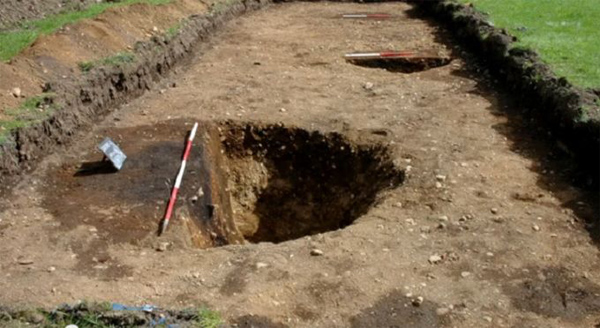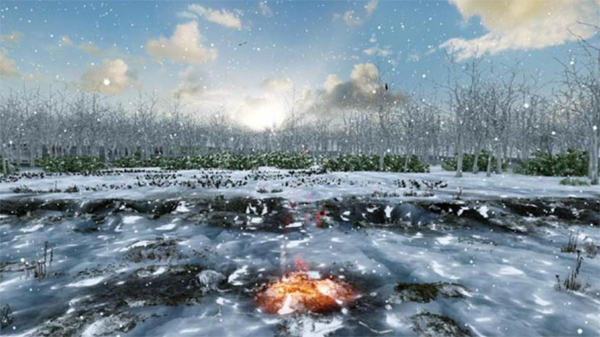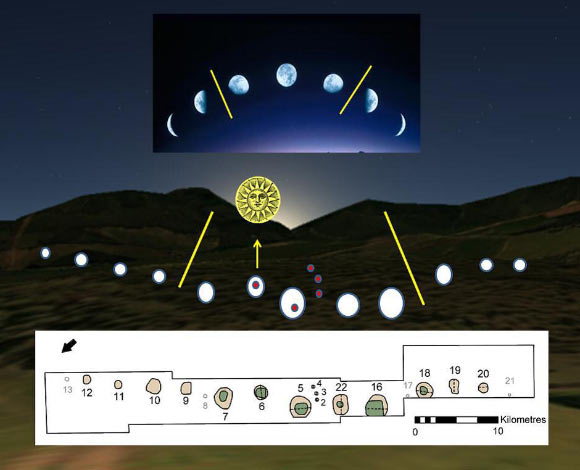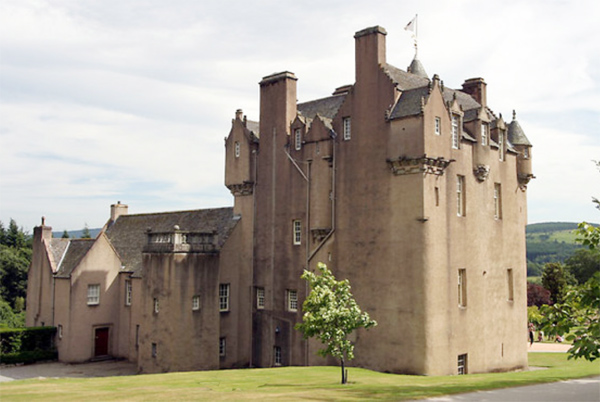
Archaeologists excavating Warren Field, an area next to Crathes Castle in Aberdeenshire from 2004-06 uncovered 12 pits which appear to mimic the phases of the moon and track lunar months. Unusual crop marks had been spotted from the air by the Royal Commission on the Ancient and Historical Monuments of Scotland (RCAHMS) which led to the dig being started.
Dave Cowley, aerial survey projects manager at RCAHMS, said: “We have been taking photographs of the Scottish landscape for nearly 40 years, recording thousands of archaeological sites that would never have been detected from the ground…Warren Field stands out as something special, however. It is remarkable to think that our aerial survey may have helped to find the place where time itself was invented.”
Archaeologists believe now they have discovered the world’s oldest lunar “calendar” in the world.
A team led by the University of Birmingham suggests the ancient monument was created by hunter-gatherers about 10,000 years ago.
Vince Gaffney, Professor of Landscape Archaeology at Birmingham, led the analysis project.
He said: “The evidence suggests that hunter-gatherer societies in Scotland had both the need and sophistication to track time across the years, to correct for seasonal drift of the lunar year and that this occurred nearly 5,000 years before the first formal calendars known in the Near East …In doing so, this illustrates one important step towards the formal construction of time and therefore history itself.”

The experts who analysed the pits said they may have contained a wooden post.

The Mesolithic “calendar” is thousands of years older than previous known formal time-measuring monuments created in Mesopotamia.
The pit alignment also aligns on the Midwinter sunrise to provided the hunter-gatherers with an annual “astronomic correction” in order to better follow the passage of time and changing seasons.
The universities of St Andrews, Leicester and Bradford were also involved.
Dr Richard Bates, of the University of St Andrews, said the discovery provided “exciting new evidence” of the early Mesolithic Scotland.
He added: “This is the earliest example of such a structure and there is no known comparable site in Britain or Europe for several thousands of years after the monument at Warren Field was constructed.”

Crathes Castle and its estate is in the care of the National Trust for Scotland (NTS).
From 2004 to 2006, trust staff and Murray Archaeological Services excavated the site.
NTS archaeologist Dr Shannon Fraser said: “This is a remarkable monument, which is so far unique in Britain.
“Our excavations revealed a fascinating glimpse into the cultural lives of people some 10,000 years ago – and now this latest discovery further enriches our understanding of their relationship with time and the heavens.”

Amazing and interesting. I always admired archeologists for their patience and tenacity. And here we are with this “lunar calendar” of more than 10.000 years. Exciting!
Why wouldn’t Scotland have invented time. We invented everything else.
Well I am a living breathing member of the family . I would love to know more about my family history for which I am only just learning how much I am of full blood line to the family .. I find it exciting to read about my ansestors and to be able to share more with my children would be amazing .
John Burnett 1 Is my ancestor he left in 1635 aboard The Abraham of London. He was merchant of Aberdeen to Virginia. I am interested in learning more about my Scottish ancestors.